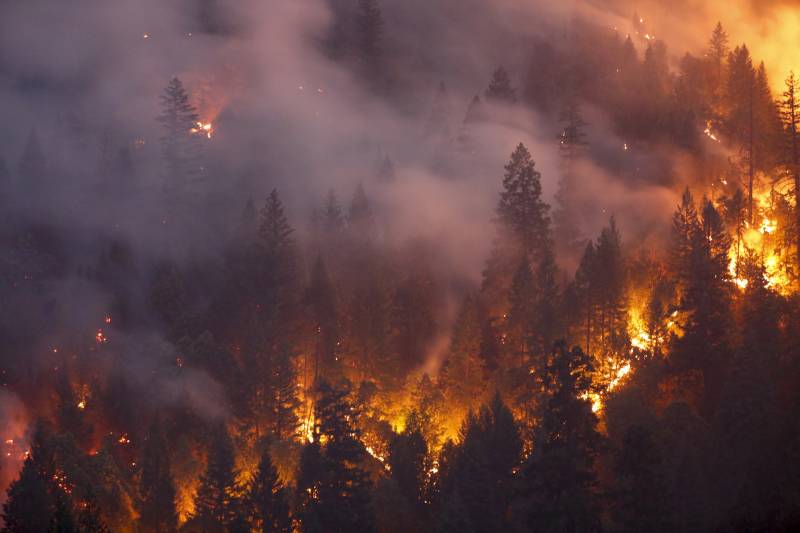Year after year, more wildfires are burning more forests across California and the West.
A new study from a research team with the U.S. Forest Service and UC Merced shows that an increasing number of these fires are highly severe — hot enough to kill nearly all of the trees, even in forests that are adapted to fire.
“Between 1985 and 2017, we documented an eightfold increase in area burned at high severity,” said research ecologist Sean Parks, lead author of the study. “When high-severity fires kill all or most trees — and under a warming climate — the forest has a hard time recovering.”
The increasing prevalence of high-severity fire could mean that the wildfires burning across the West are converting forests once thick with towering trees into shrubland, or they might transform coastal mountains blanketed in oak and madrone trees into scrubby grassland.
Parks says these super-hot fires are another sign of a warming world. He’s presenting his wildfire research at the American Geophysical Union’s annual fall meeting, normally held at the Moscone Center in San Francisco, but now in session online due to the pandemic.

